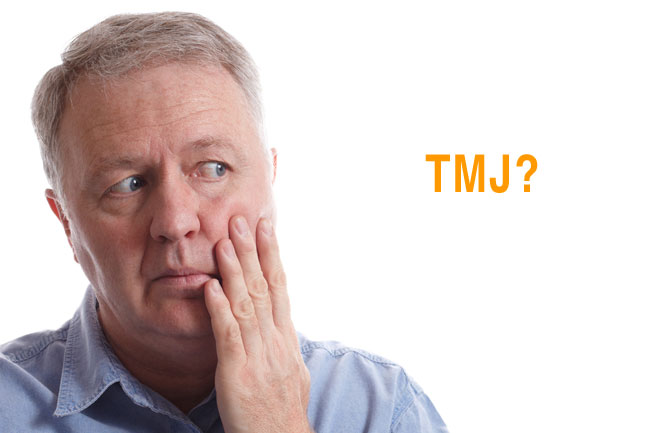Jaw Pain, Clicking & Popping
Why it happens & how we can treat itAn answer to jaw pain, clicking and popping
 Jaw pain, clicking or popping when you move your jaw while talking, chewing or yawning?
Jaw pain, clicking or popping when you move your jaw while talking, chewing or yawning?
This is not only uncomfortable but can be annoying when communicating and eating. It can also become embarrassing when it has reached the point that opening your mouth results in a locked jaw.
If this sounds like you, we think it’s time to be looking for an alternative diagnosis, because the problem could be caused by your temporomandibular joint (TMJ) and misaligned bite.
Do I have TMJ Disorder?
Symptoms include migraines, neck pain, jaw pain, lower back pain, snoring, sleep apnea. Use our Free TMJ Disorder Assessment ToolsHow your TMJ can cause your jaw to ache
If no other diagnosis has been found, your jaw cracking or locking could have something to do with your TMJ. Your TMJ is the joint that connects your jaw to your skull. It’s what allows you to eat, chew and talk through up and down, back and forth and sideways movements. It’s comprised of an intricate network of bones, muscles, nerves, connective tissue and, padding it all, cushioning discs.
You have two temporomandibular joints – one at each side of your face . If either one, or both, are misaligned or not functioning properly, they could be the source of your jaw pain. If this is your case, you could be suffering from what we call a temporomandibular disorder (TMD). Aching pain is most commonly coming from muscles (myofascial Pain around the affected joints).
TMD may be relieved by realigning the bite
It might surprise you to learn that these sometimes alarming symptoms can be corrected. As noted above, TMD is often the result of your bite not being aligned correctly.
Friction caused by this misalignment can:
- stretch the jaw’s ligaments
- breakdown in the bones (arthritis) or cartilage
- cause scar tissue to form or,
- alter the joint’s lubrication system
causing the disk to become stuck out of position leading to pain, jaw locking, jaw clicking and popping. Treatment to help realign your bite can help to relieve the jaw pain and the associated clicking and popping that goes with it.
The most common type of jaw clicking and popping is the Reciprical Click. It is associated with and overclosed or posterior positioned bite. The clicking on opening the mouth is the sound created when the disc goes back into its proper place. The squeak or dull noise on closing is the sound of the disc going out of place and is often associated with itchy ears.
Tackle TMD with physiologic dentistry
 By arranging a consultation with a dentist trained in the principle of physiologic dentistry, you can start to tackle the symptoms caused by TMD.
By arranging a consultation with a dentist trained in the principle of physiologic dentistry, you can start to tackle the symptoms caused by TMD.
Step 1: Assessing jaw function
There are various advanced techniques used to assess the condition of your TMJ. One is called a Sonography which can monitor joint noises, such as popping and clicking sounds coming from your TMJ, indicating that your jaw isn’t functioning correctly. Another is the MKG (mandibular Kenesiograph or CMS (computerized Mandibular Scan) that can show the physical displacement associated with the noise and how it affects jaw movement. There is also an autonomic nervous system test which determines your current bite’s strength and if it can be improved.
Step 2: Muscle relaxation
The next step is to get the jaw muscles to relax. This is done through the use of a ULF-TENS (Ultra Low Frequency Transcutaneous Electrical Stimulation) machine that relaxes the jaw muscles by emitting minute electrical stimuli at an ultra-low frequency.
Step 3: Reassessing jaw function following muscle relaxation
This is the key to Physiologic Dentral Treatment. Once your muscles have started to relax, your bite can be accurately evaluated without the chronic muscle spasm, and shortening. The gently realigned jaw position or physiologic rest position is recorded three dimensionally through the use of a physiologic bite. This bite is taken by stimulating reflex movements of the jaw giving outstanding accuracy. The use of non-invasive orthotic appliance or diagnostic physiologic orthotic is used as the first step in relieving pain and establishing a physiologic state ideal to induce healing. Healing will cause postural corrections over time. It is essential that the process continue to allow healing to progress.

0 Comments